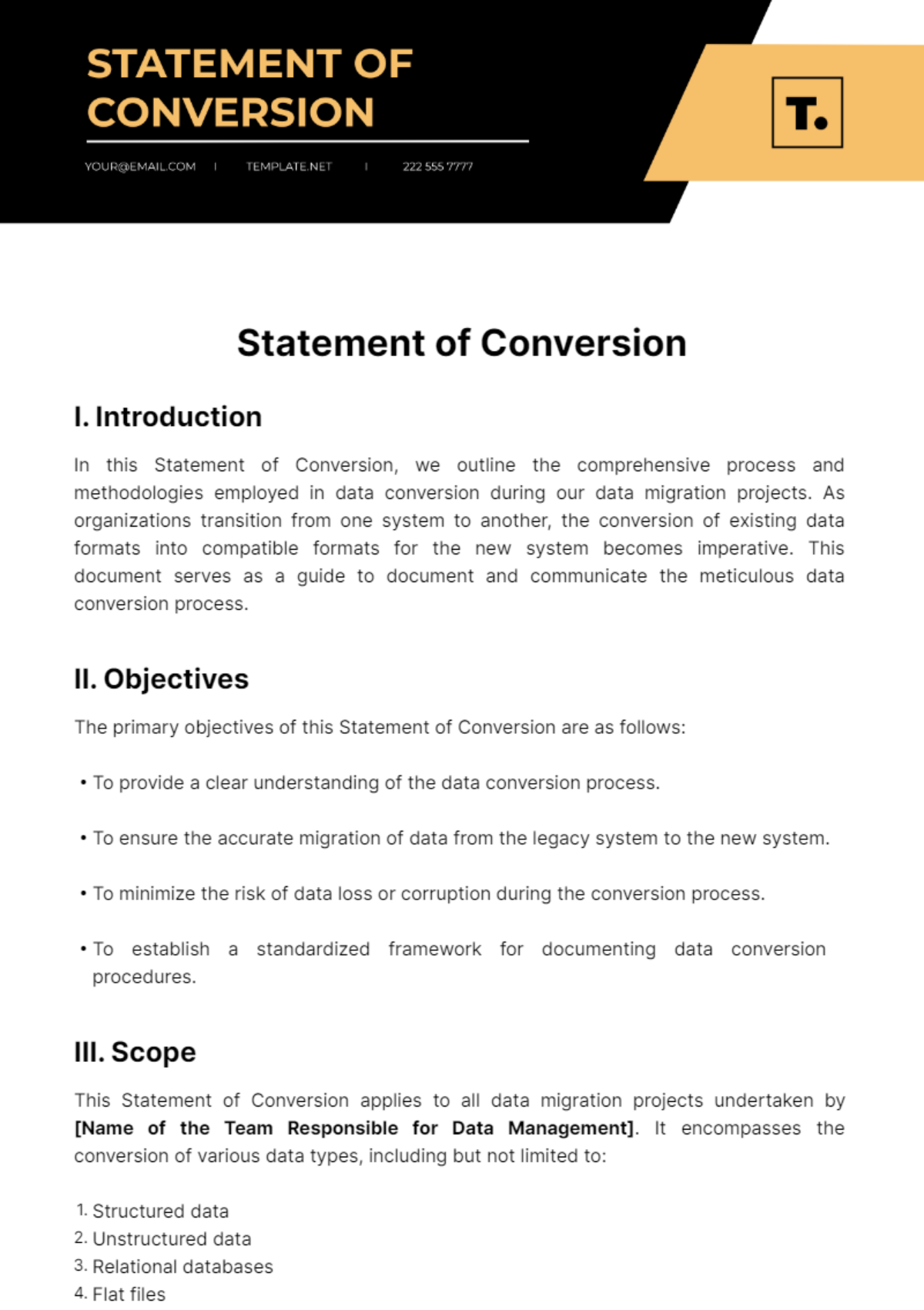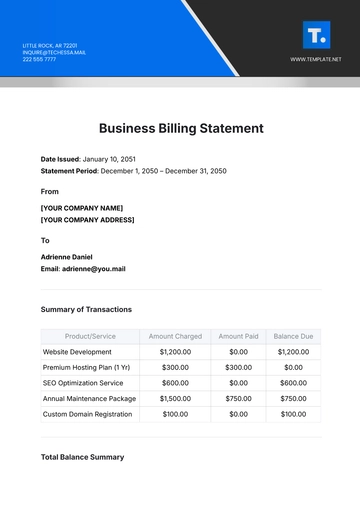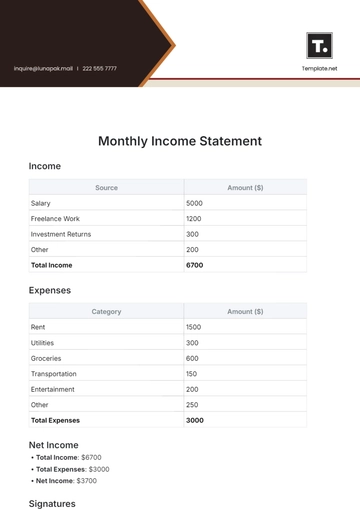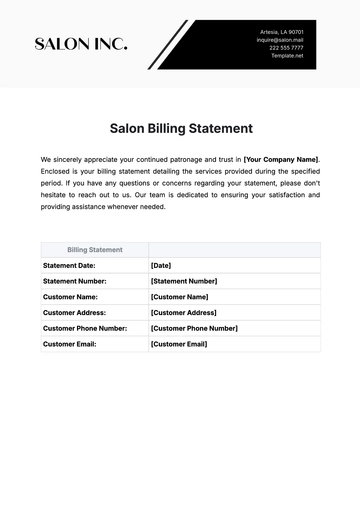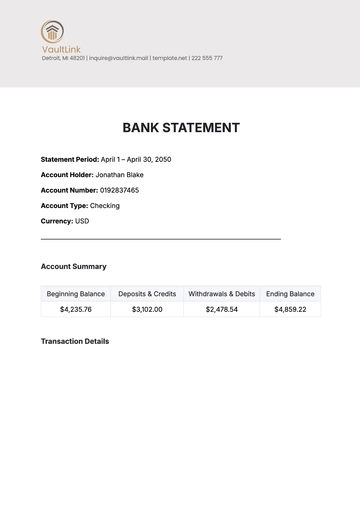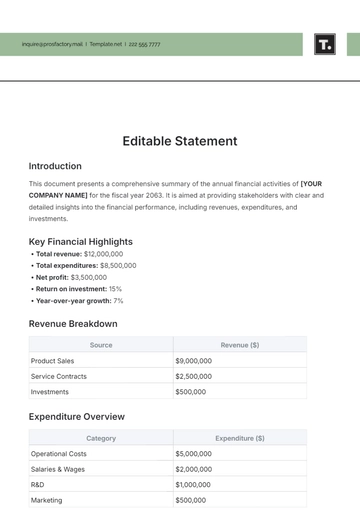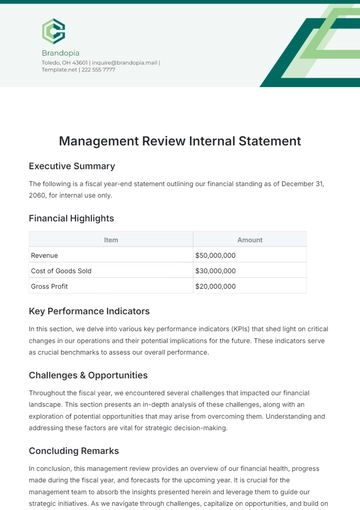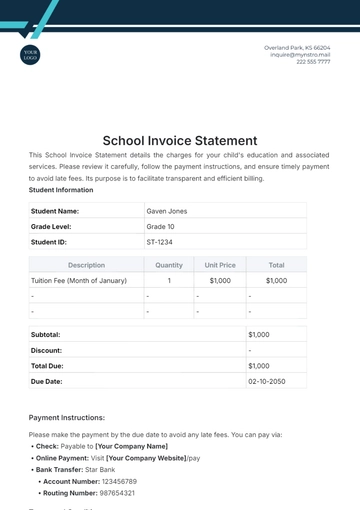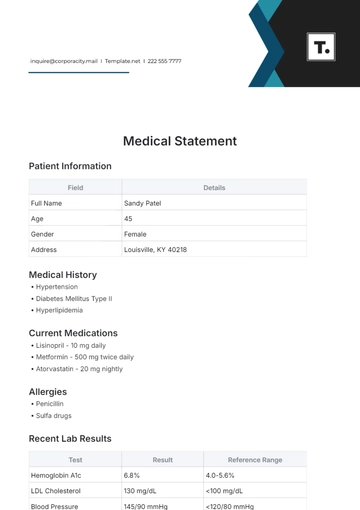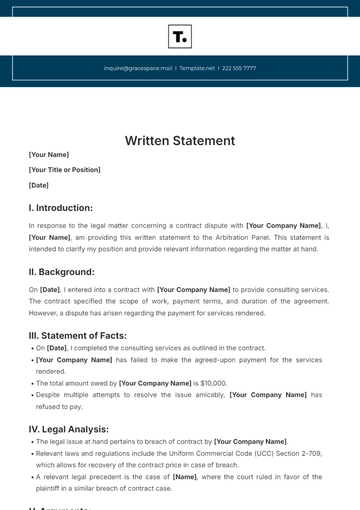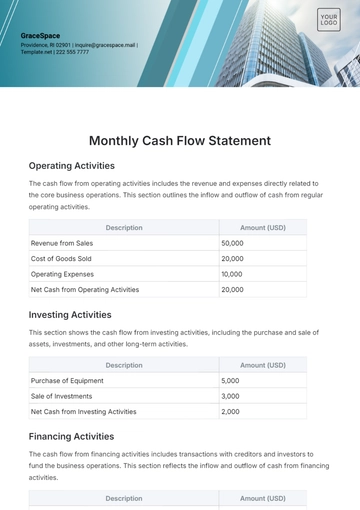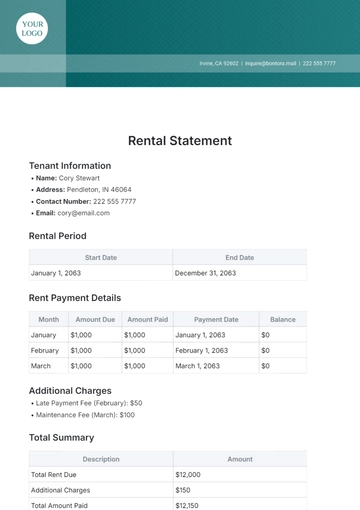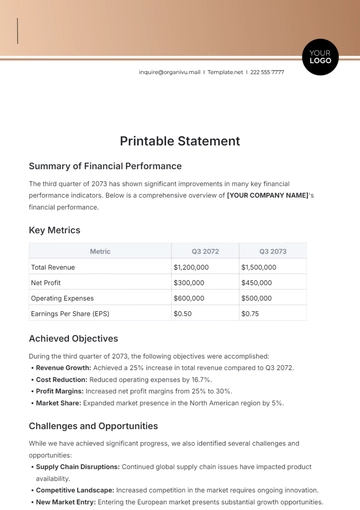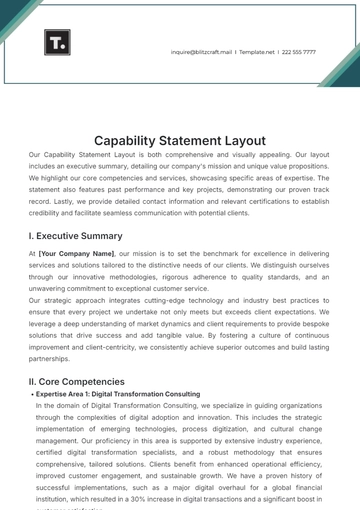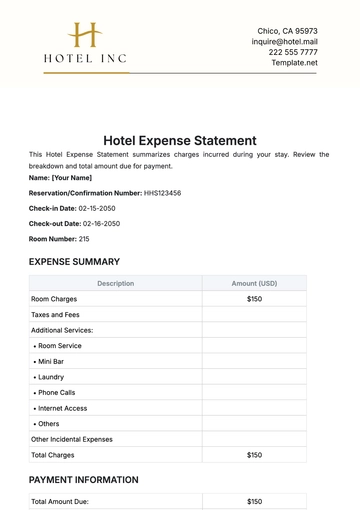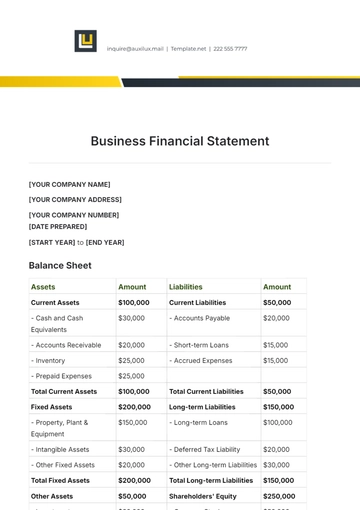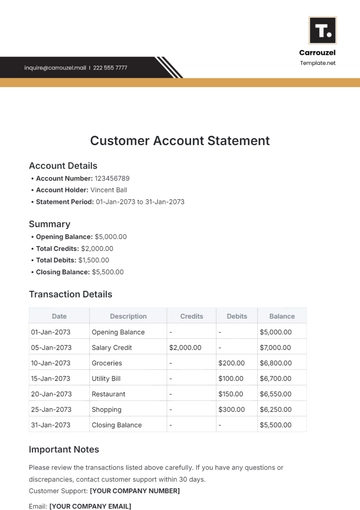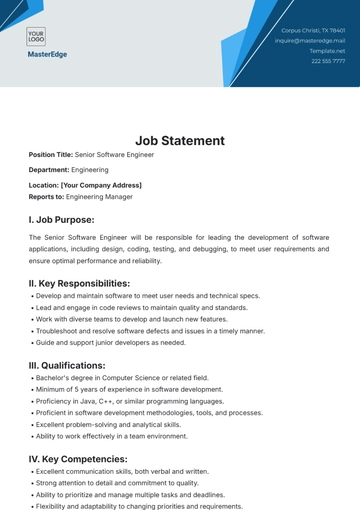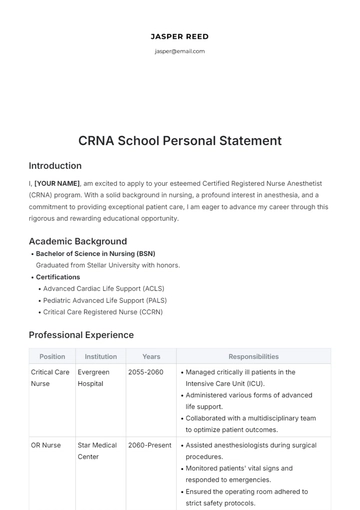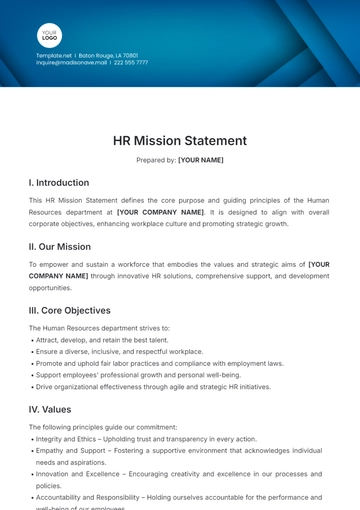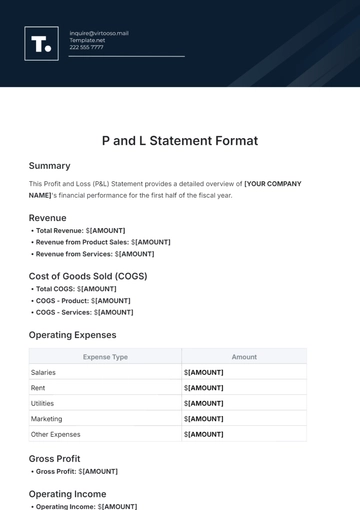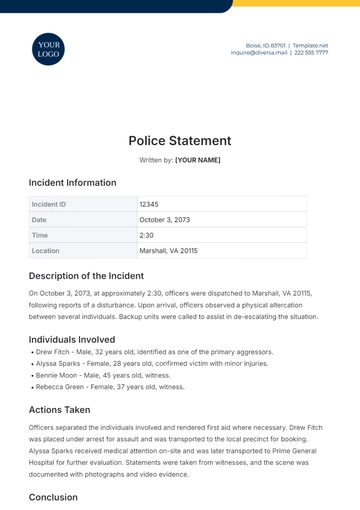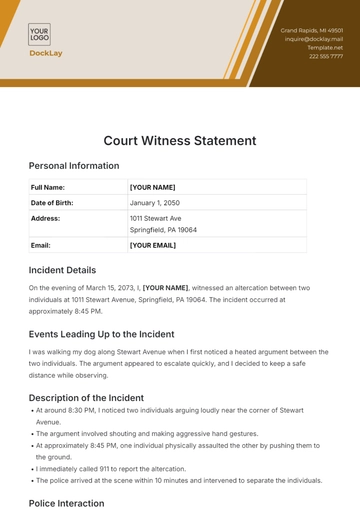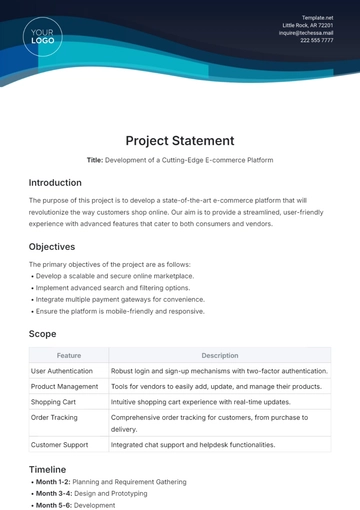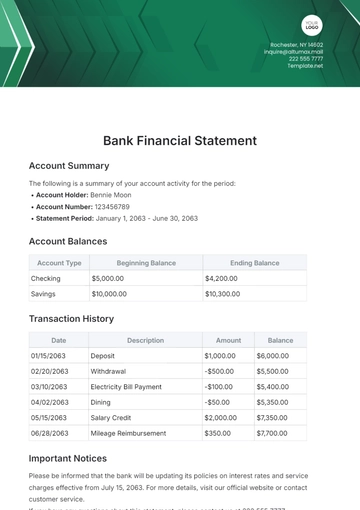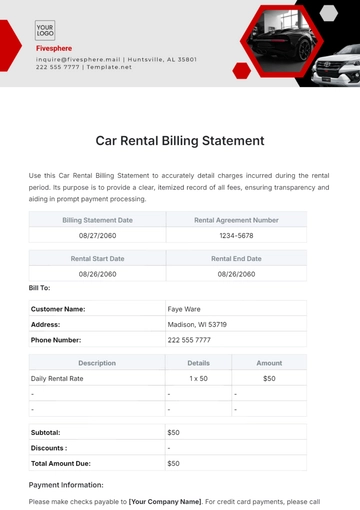Statement of Conversion
I. Introduction
In this Statement of Conversion, we outline the comprehensive process and methodologies employed in data conversion during our data migration projects. As organizations transition from one system to another, the conversion of existing data formats into compatible formats for the new system becomes imperative. This document serves as a guide to document and communicate the meticulous data conversion process.
II. Objectives
The primary objectives of this Statement of Conversion are as follows:
To provide a clear understanding of the data conversion process.
To ensure the accurate migration of data from the legacy system to the new system.
To minimize the risk of data loss or corruption during the conversion process.
To establish a standardized framework for documenting data conversion procedures.
III. Scope
This Statement of Conversion applies to all data migration projects undertaken by [Name of the Team Responsible for Data Management]. It encompasses the conversion of various data types, including but not limited to:
Structured data
Unstructured data
Relational databases
Flat files
Multimedia files
IV. Methodology
4.1 Assessment and Analysis:
Conduct a thorough assessment of the existing data formats and structures.
Analyze the compatibility of the data with the new system.
Identify any discrepancies or anomalies that may affect the conversion process.
4.2 Mapping and Transformation:
Develop a comprehensive mapping strategy to map data fields from the source to the target system.
Implement transformation rules to ensure data integrity and consistency.
Address any data quality issues through cleansing and normalization techniques.
4.3 Validation and Verification:
Perform validation checks to ensure the accuracy and completeness of the converted data.
Verify data integrity before and after the conversion process.
Conduct test migrations in a controlled environment to mitigate risks.
4.4 Execution and Monitoring:
Execute the data conversion process according to the predefined plan and schedule.
Monitor the conversion process closely to identify and resolve any real-time issues.
Document all activities and maintain a log of conversion-related events.
V. Documentation
Maintain comprehensive documentation of the data conversion process, including:
Conversion plan
Mapping documents
Transformation rules
Validation procedures
Test cases and results
Incident reports
Ensure that all documentation is kept up-to-date throughout the project lifecycle.
VI. Conclusion
In conclusion, this Statement of Conversion Template is a structured framework for documenting and executing data conversion processes during our data migration projects. By adhering to the outlined methodologies and procedures, we aim to achieve seamless transitions while ensuring data integrity and reliability in the new system.
Statement Templates @ Template.net
